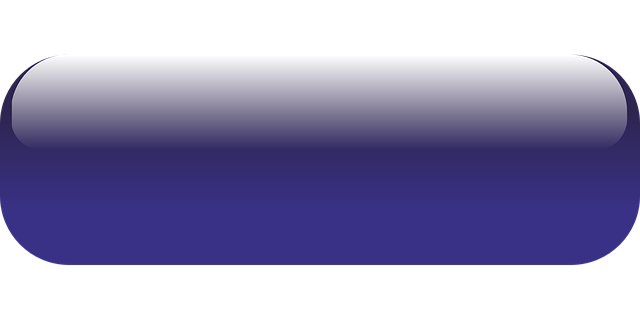Website monitoring and maintenance are essential for online businesses to ensure continuous accessibility and optimal user experiences. By tracking key performance indicators like uptime, load speeds, and server responsiveness, businesses can promptly identify and resolve issues. Effective website maintenance includes regular reviews of metrics such as page load time, server response time, bounce rate, average session duration, and conversion rates to drive continuous improvement. Advanced tools and strategies, like Google PageSpeed Insights, security monitoring, and automated issue management, are crucial for maintaining site speed, security, and availability. Proactive website performance optimization, regular content updates, and robust security protocols enhance SEO potential and user satisfaction. Integrating user feedback further improves website functionality and usability, leading to better conversion rates and a positive online reputation.
In today’s digital landscape, robust website monitoring and support are paramount for online success. Understanding the basics of website monitoring equips businesses with the knowledge to track key metrics, identify performance bottlenecks, and ensure seamless user experiences. This article delves into essential practices, from crucial metrics to cutting-edge tools, strategic optimizations, and proactive security measures. By integrating user feedback, you can enhance your website’s performance and maintain a competitive edge in the dynamic online realm of website maintenance.
Understanding Website Monitoring: The Basics and Why It Matters

Website monitoring is an essential practice for any online business or organization, as it involves keeping a close eye on your website’s performance and health. It encompasses various tasks such as tracking website uptime, page load speeds, server responsiveness, and overall site functionality. By implementing robust monitoring tools, webmasters can ensure their sites are always accessible to users worldwide, delivering fast and efficient experiences.
The significance of website maintenance cannot be overstated. Regular monitoring helps identify potential issues like downtime, broken links, or slow loading times, allowing for prompt resolution. It also facilitates performance optimization, ensuring your site remains competitive in the digital marketplace. Moreover, with user experience at the forefront of modern web design, maintaining a reliable and fast-loading website is crucial to retaining visitors and fostering online engagement.
Key Metrics to Track for Effective Website Maintenance

Effective website monitoring and support hinge on tracking key metrics that highlight performance, user experience, and potential issues. These metrics are crucial for gauging the health of a website and ensuring it meets user expectations and business objectives. Key performance indicators (KPIs) such as page load time, server response time, and uptime are essential to monitor. Page load speed directly impacts user satisfaction and search engine rankings, while server response time reflects the efficiency of your website’s backend operations.
Additionally, tracking bounce rate, average session duration, and conversion rates offers valuable insights into how users interact with your site. A high bounce rate could indicate issues with content relevance or usability, whereas extended average session durations suggest that visitors are engaging deeply with your site. Conversion rates help measure the effectiveness of your website in achieving its intended goals, whether that’s generating leads, making sales, or encouraging sign-ups. Regularly reviewing these metrics enables proactive website maintenance and ensures continuous improvement in user experience and overall online performance.
Tools and Technologies for Comprehensive Website Support

In the realm of website monitoring and support, a myriad of tools and technologies are at the disposal of web administrators. These range from basic analytics platforms that track user behavior to advanced automation software capable of identifying and rectifying issues before they impact user experience. Comprehensive website maintenance involves leveraging these technologies to ensure sites remain fast, secure, and constantly available.
Effective website support necessitates a multi-faceted approach. This includes regular performance checks using tools like Google PageSpeed Insights, continuous security monitoring through services that detect and mitigate threats in real time, and proactive issue resolution via automated scripts or human intervention. By integrating these technologies into routine maintenance practices, web managers can ensure optimal site functionality and enhance user satisfaction.
Strategies for Proactive Website Performance Optimization

Proactive website performance optimization is a key aspect of effective website maintenance. It involves implementing strategies that anticipate and mitigate potential issues before they impact user experience or search engine rankings. One such strategy is regular site speed testing, which helps identify slow loading pages. By optimizing images, minifying code, and leveraging caching mechanisms, webmasters can significantly enhance page load times.
Additionally, continuous monitoring for broken links and error pages is crucial. Using tools that crawl the entire site, administrators can quickly fix any issues, ensuring a seamless user journey. Regularly updating content and keeping the website secure through robust security protocols further contributes to its longevity and efficiency. Such proactive measures not only improve performance but also signal to search engines that the site is well-maintained and valuable, enhancing its SEO potential.
Handling Website Downtime: Quick Response for Seamless User Experience

Website downtime can significantly impact user experience and customer satisfaction. As such, efficient website monitoring is paramount for maintaining a seamless digital journey. Proactive strategies, implemented through robust website maintenance practices, ensure that any potential issues are identified and resolved swiftly. This includes regular health checks, performance tests, and real-time alerts to quickly address server outages or code errors.
A quick response to downtime not only minimizes disruption but also showcases a commitment to reliable service. It enables businesses to regain control, maintain their online reputation, and foster user trust. Through dedicated website maintenance, companies can ensure their digital platform remains accessible and performs optimally, providing users with a consistent and positive experience.
Security Concerns in Website Maintenance: Protecting Your Digital Assets

Website maintenance is a vital aspect of ensuring your digital assets remain secure and accessible. As online platforms become increasingly complex, security concerns have grown in tandem, necessitating robust measures to protect sensitive data. Malicious attacks like DDoS (Distributed Denial of Service) and data breaches are significant risks that can cripple a website’s functionality and damage its reputation.
Implementing strong security protocols is essential for any website maintenance strategy. This includes regular software updates, installation of reputable security plugins or tools, and vigilant monitoring for suspicious activities. Additionally, employing encryption techniques like SSL (Secure Sockets Layer) certificates ensures data transmitted between the website and its users remains confidential. These proactive steps are crucial in building a resilient online presence and fostering user trust.
User Feedback Integration: Enhancing Website Performance through Interaction

Integrating user feedback into your website maintenance strategy is a powerful way to enhance performance and create a better user experience. By collecting and acting upon comments, suggestions, and complaints from visitors, businesses can identify pain points and areas for improvement on their sites. User feedback provides valuable insights that might not be apparent through standard analytics tools. For instance, users may highlight slow loading times, broken links, or confusing navigation, which can then guide website developers in optimizing the site’s technical aspects.
This interactive approach not only improves the overall functionality and usability of a website but also demonstrates to customers that their opinions are valued. Implementing feedback mechanisms such as review sections, comment forms, or live chat support allows for continuous improvement, ensuring the website remains relevant and efficient. Effective website maintenance involves actively listening to and engaging with users, leading to higher customer satisfaction and better conversion rates.
